
Underground, Overground
by
Andrew Martin
Published 13 Nov 2012
Then again, the Beck plaque was put up, and it is still there today, on the southbound platform, and when I cycled to Finchley Central station recently, and asked if I could go through the barrier without paying, since I only wanted to look at the Beck memorial, the gateman smiled in approval and nodded me through. There is also a permanent exhibition devoted to Harry Beck in the London Transport Museum, and after years of the map appearing unsigned, his name has been restored: ‘This diagram is an evolution of the original design conceived in 1931 by Harry Beck.’ If I may, I will add a personal footnote. As a journalist writing regularly about public transport, I scored two campaigning victories. The first was that I secured the removal of some plastic potted plants from the roof of the Burger King in Victoria Station.
…
On early Underground maps the Inner Circle was not designated, but you could pick it out by looking at how the Metropolitan and District intersected, at which point it would become embarrassingly clear that the Circle was not circular at all. In her novel King Solomon’s Carpet (1991) Barbara Vine (aka Ruth Rendell) suggests a resemblance to a swimming dolphin, ‘its snout being Aldgate … the crown of its head King’s Cross, its spine Paddington’. (But for the tail she goes outside the Circle – invoking Ealing Broadway.) On Harry Beck’s diagrammatised Tube map of 1933 the Circle resembles, as has often been pointed out, a vacuum flask lying on its side with the narrower top end (where the plastic cup would be fixed) pointing east, which does reflect the fact that the circle is narrower to the east, which was a reason not to use it for people who wanted to get from, say, Moorgate to Aldgate.
…
Under him the background streets were comprehensively banished, stations became little circles, and exchange stations open circles. Good work, and had the pronunciation of Stingemore’s name been evident from its spelling, he might be better remembered today. But I doubt it, because it was Stingemore’s fate to be elbowed aside by a genius. In 1931 Harry Beck first presented his first draft for a new type of Tube map to the Underground Group. Beck was an engineering draughtsman who had recently been laid off from a temporary position by that same Underground Group. His idea was to simplify what he characterised as not a plate of spaghetti but worse, ‘vermicelli’.

The Tube: Station to Station on the London Underground
by
Oliver Green
Published 15 Feb 2012
London Transport, as it was soon generally known, took over all bus, tram and underground railway operation in the Greater London area, but not the suburban services of the mainline companies. They remained separate but agreed to a fare-pooling scheme for their local lines, and to cooperate with London Transport on future developments. The first pocket diagram designed by Harry Beck, printed by London Underground in March 1933, a few weeks before the creation of London Transport. This was a seminal moment in graphic design history. It must have looked like an Underground Group takeover, as Ashfield was made chairman and Pick chief executive of the new authority. The strong and distinctive corporate identity developed by Pick at the UERL using Holden, Johnston and other architects and designers was now expanded and applied to the buildings and equipment inherited from formerly separate organisations that were merged into the LPTB.
…
Since 2000, both of London’s elected mayors have used their transport powers to promote the city’s economic, social and environmental development. For all the political wrangling, the Underground in particular is now recognised by all sides as the key to London’s future success and sustainability. It is still, as Frank Pick put it in the 1930s, ‘the framework of the town’. Harry Beck’s iconic Underground map, which now incorporates the Overground and DLR networks, is the perfect representation of this. Use it for your journeys of exploration. East Finchley, rebuilt in 1939–40 for the Northern line extension to the designs of Holden and Bucknell. The station’s most striking feature is the lead-coated archer figure by Eric Aumonier, now a north London landmark.
…
All of these accept Oyster card payment, although an all-zones Travelcard is recommended as the cheapest way to do two or three of these journeys in a day if you are planning to leave stations and pass through ticket barriers. The journeys can be made in any order but each will take two or three hours to complete. Remember that Harry Beck’s iconic design offers a diagrammatic representation of the Underground, not a geographical map, and both time and space are distorted. Stations appear to be the same distance apart when in fact they are widely spaced in outer London and close together in the centre. This makes it easy to read but deceptive.
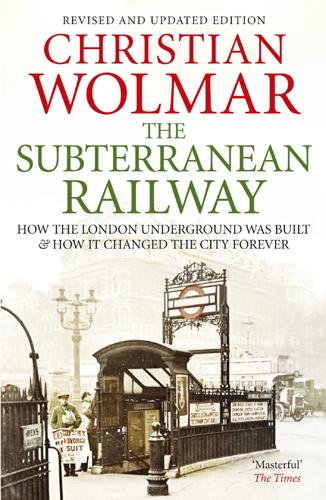
The Subterranean Railway: How the London Underground Was Built and How It Changed the City Forever
by
Christian Wolmar
Published 30 Sep 2009
As Nikolaus Pevsner put it, ‘no exhibition of modern painting, no lecturing, no school teaching, can have had anything like so wide an effect on the educatable masses as the unceasing production and display of [Underground] posters over the years 1930–1940’.30 It was free art for the masses. The most enduring image of the Underground, also introduced by Pick, is, of course, the famous schematic Underground map conceived by Harry Beck. Along with the roundel, it typifies how London Transport wanted to be perceived – modern, clean, forward-looking and elegant. Like London Transport itself, the map nearly did not happen. Its designer, Harry Beck, had been a junior draughtsman for the Underground but had been made redundant by the time he sketched out the first draft of the famous map. Beck had worked in the signal engineers’ department for six years and the original map was based on an electric circuit diagram.
…
It did not quite work out like that, but then that is very much part of the Underground story, with plans and projects not always turning out as expected. Probably the next greatest impact of the Underground on London is the design and architecture. The purity of the design is encapsulated most famously in Harry Beck’s map of the system, but also given expression in the architecture of numerous stations and the consistency of the use of the typeface, Johnston, devised specifically for the Underground. There is barely a streetscape in the centre of the city or in most high streets served by a station which is not made recognizably and demonstrably London by a design feature initiated by London Transport.
…
And while the short-term economics may have been disastrous, along with the continued development of the suburban railway network, it was to prove a boon to London’s economy. It was to be used by both commuters and, importantly, leisure travellers and it quickly became an essential part of the capital’s infrastructure. Yet, oddly, it was to take another sixty-five years and the creation of Harry Beck’s famous diagram before the name ‘Circle Line’ appeared on the London Underground map. FIVE SPREADING OUT Neither the Metropolitan nor the District wasted the years of waiting to complete the inner circle. Both were pursuing markets further afield – in the south and west in the case of the District and to the north and west for the Met.
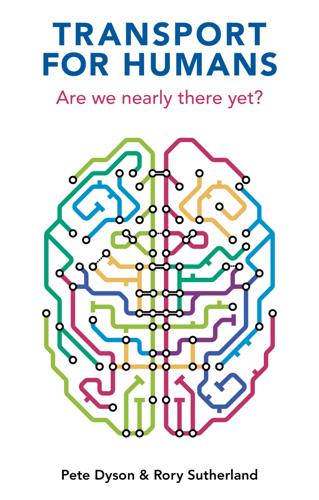
Transport for Humans: Are We Nearly There Yet?
by
Pete Dyson
and
Rory Sutherland
Published 15 Jan 2021
One nice example is that early stations were built with their own distinctive tile patterns, so that users who could not read could recognize their stop. But the London Underground’s most important piece of human-centred design is its map. It is iconic – not just of the city it represents, but also of the idea of human-centred transport. The version we are familiar with today was created in 1933 by Harry Beck, a technical draughtsman from Leyton, East London. Having spent the previous decade drawing electrical wiring diagrams, his masterstroke was transferring that skill set to map-making: transforming a geographically accurate but messy map of eight underground lines into an easily navigable diagram.
…
The Shops and Companies of London. London: The British Library. 6 This, and much of the detail that follows, can be found in D. Bownes, O. Green and S. Mullins. 2012. Underground: How the Tube Shaped London. London: Allen Lane. Figure 2. Making sense of the messy middle: before and after Harry Beck. London is certainly not the only city to have used human-centred design to help confused travellers on its public transport system. For instance, it is still possible for those of us who use the Tube in London to accidentally board a train and set off in the wrong direction from time to time, sheepishly alighting one stop later and dashing across the platform.
…
Martin’s Press. 5 E. A. Maguire, D. G. Gadian, I. S. Johnsrude, C. D. Good, J. Ashburner, R. S. Frackowiak and C. D. Frith. 2000. Navigation-related structural change in the hippocampi of taxi drivers. Proceedings of the National Academy of Sciences 97(8), 4398–4403. Figure 9. Harry Beck shows-off his hard fought innervation. Recall the story of the London Underground map from chapter 1. It is hard to overstate how much impact that map has had on Londoners’ perception of travel. One participant in a 2008 study said: I probably know London better by Tube than I do above ground, because when I’m walking without a map and then I hit a Tube stop, then I know where I am.

Journey to Crossrail
by
Stephen Halliday
One of the aims of the design team was to reduce station clutter, and in this they were following the precepts laid down in the 1930s by the stern figure of Frank Pick, vice chairman and chief executive of the London Transport network during the 1930s. A blue plaque on Frank Pick’s former home at 15 Wildwood Road, Hampstead Garden Suburb. He was a pioneer of good design on London Transport. (Spudgun67 via Wikimedia Commons CC SA 4.0) A blue plaque marking the Leyton birthplace of Harry Beck, electrical draughtsman and designer of the iconic Underground Map. (Spudgun67 via Wikimedia Commons CC SA 4.0) Frank Pick (1878-1941) was one of the most influential figures in the history of the Underground, and particularly in connection with its art and architecture. Born in Lincolnshire, he moved to the Underground in 1906 and was a founder member of the Design and Industries Association which advocated modern design incorporating new materials and methods.
…
Born in Lincolnshire, he moved to the Underground in 1906 and was a founder member of the Design and Industries Association which advocated modern design incorporating new materials and methods. In 1932, after some hesitation, he adopted the new design for the Underground map proposed by a temporarily unemployed electrical draughtsman, Harry Beck (1902–74). It became an icon of industrial design and, updated to accommodate new lines, remains in use. In the 1930s, Pick commissioned the architect Charles Holden (1875–1960) to design new stations on the Northern Line extension between Clapham and Morden. Pick informed one correspondent, ‘We are going to discard entirely all ornament … We are going to represent the Design and Industries Association gone mad.’
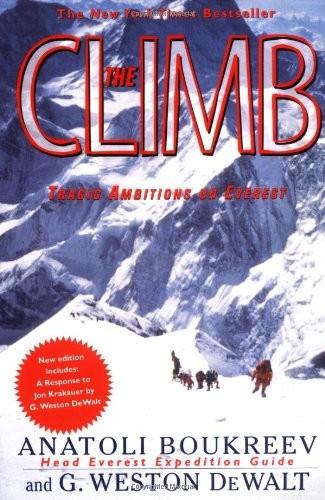
The Climb: Tragic Ambitions on Everest
by
Anatoli Boukreev
Published 16 Jul 1999
Because I don’t personally think it’s a wise thing to start out climbing after a big storm because it’s not a good sign.” In another tent at Camp IV, there were similar doubts and conversations. Lou Kasischke, fifty-three, an attorney from Bloomfield Hills, Michigan, and a client-climber in Rob Hall’s expedition, was sharing a tent with three other climbers: Andy Harris, Beck Weathers, and Doug Hansen. Everyone except Andy Harris, a Rob Hall guide, thought a summit bid the next day was a bad idea. Kasischke recalled, “It was a roaring storm out there at high camp, and I remember in our tent we were arguing … and it was three to one that we ought to be waiting. We were concerned that we really hadn’t had a full day of good weather, a full twenty-four hours of good weather, and we just … thought it would be smart to wait a day… .
…
And after some time, I don’t know how much, I found my tent, took off my pack and crampons, knocked the snow and ice off my boots, and without any power, went into the tent, but it was empty. Nobody had come. Nobody. Boukreev was alone in his tent. A stone’s throw away another climber, Lou Kasischke from the Rob Hall expedition, was also alone. His tentmates, Andy Harris, Beck Weathers, and Doug Hansen, had yet to return. “I got back to camp about four-thirty or five,” Kasischke said, “and I just collapsed in my sleeping bag from exhaustion… . I don’t think I had a molecule of energy left in me. Later [I] awoke or regained consciousness … and it was a terrifying experience for me.
…
He couldn’t do it all; he needed help, so he made a quick round of the expeditions tented nearby: to the tents of Rob Hall’s clients, to the tents of Hall’s Sherpas, to the tents of the Taiwanese. Rob Hall’s expedition’s members were either asleep, unable or unwilling to lend support to Boukreev’s effort. One of them, Lou Kasischke, was totally incapacitated, still snowblind, still alone in his tent. His tentmates, Andy Harris, Beck Weathers, and Doug Hansen, as of 1:00 AM., still had not returned to Camp IV. The failure of Boukreev to get assistance from the Rob Hall expedition members at Camp IV was the second time that evening that a plea for help had gone unheeded. Mike Groom, who had left Beck Weathers and Yasuko Namba behind in the dogpile and returned with the Mountain Madness climbers, Schoening, Gammelgaard, and Beidleman, had about an hour earlier pleaded with various of the Adventure Consultants’ team members to attempt a rescue of their fellow climbers.

Beautiful Visualization
by
Julie Steele
Published 20 Apr 2010
It should be noted that the efficacy and success of the periodic table were achieved with the absolute minimum of graphical treatment; in fact, the earliest versions were text-only and could be generated on a typewriter. Strong graphic design treatment isn’t a requirement for beauty. The London Underground Map The second classic beautiful visualization we’ll consider is Harry Beck’s map of the London Underground (aka the Tube map—see Figure 1-2). The Tube map was influenced by conventions and standards for visuals, but not by those of cartography. Beck’s background was in drafting electrical circuits: he was used to drawing circuit layout lines at 45° and 90° angles, and he brought those conventions to the Tube map.
…
That map (which of course is the acclaimed Beck map seen in Figure 5-2) was brilliantly friendly: simple, bright, functionally colorful, designed to help users easily understand connections between lines, and physically tiny. Folded, it fit easily into my pocket, to be whipped out at a second’s notice for immediate reference (which I did often!). Figure 5-2. Harry Beck’s map of the London Underground makes a complex system appear simple and elegant. 1933 London Tube Map © TfL from the London Transport Museum collection. Used with permission. London was a medieval city, and therefore its street pattern is random. You cross a crooked intersection and the name of the street you’re on changes.

British Rail
by
Christian Wolmar
Published 9 Jun 2022
With this new-found permanent status, the panel was able to hire professional design consultants, a role given to the pioneering Design Research Unit, which had been established soon after the Second World War as the first such design agency in the UK. The only previous example of a major public transport organization adopting such a coherent image was London Transport which, ever since its inception in 1933, had employed a clear design language based on a number of key elements: the roundel, red buses, the Harry Beck map of the Underground and the Johnston typeface, all of which have survived to this day. Williams realized that British Railways needed to follow London Transport’s example. He was a visionary, who sought to blend engineering and aesthetics, and wanted his fellow railwaymen to share his vision.
…
There was nothing to encourage people to connect between destinations reached from different main-line stations. Therefore the production of the first Network SouthEast map was seen as revolutionary, even if it seemed patently clear that it should have been done years before, especially given that London Underground had produced its famous schematized and colourful version designed by Harry Beck as far back as the 1930s. It is testimony to its importance that the Network SouthEast map survived privatization in the 1990s, which separated out the various routes into different franchises, with the simple addition of the names of the new private operators. A Network SouthEast manifesto was produced and 850,000 copies in full colour were handed out to staff and commuters over the space of a couple of days.

Mapmatics: How We Navigate the World Through Numbers
by
Paulina Rowinska
Published 5 Jun 2024
Connections are the thing: ‘The London Underground Map Narrated by Jancis Robinson’, Design Classics 5, BBC Worldwide video, 1987, https://search.alexanderstreet.com/preview/work/bibliographic_entity%7Cvideo_work%7C1796780. printed on 500 trial pocket maps: ‘Harry Beck’, Famous Graphic Designers, 2018, accessed 29 May 2023, https://www.famousgraphicdesigners.org/harry-beck. clear and simple to navigate: Alexander J. Kent, ‘When Topology Trumped Topography: Celebrating 90 Years of Beck’s Underground Map’, Cartographic Journal 58, no. 1 (2021): 1–12, https://doi.org/10.1080/00087041.2021.1953765. which didn’t seem so distant anymore: Darien Graham-Smith, ‘The History of the Tube Map’, Londonist, April 2018, https://londonist.com/2016/05/the-history-of-the-tube-map.
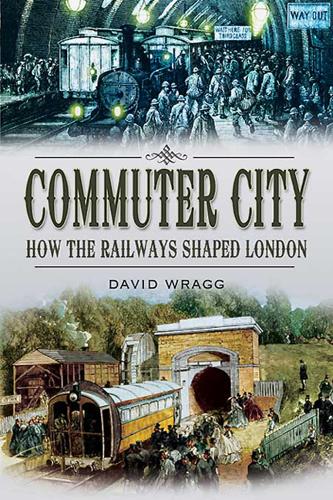
Commuter City: How the Railways Shaped London
by
David Wragg
Published 14 Apr 2010
Rightly regarded as an outstanding example of twentieth century design, the London Underground map was designed by an unemployed electrical engineer, Harry Beck, in 1931. With a keen sense of humour, he once described the map as ‘The Underground straight eight all-electric skit-set circuit diagram.’ Apart from the River Thames, shown meandering through the map, and the position of the mainline stations on the underground network, the map showed no surface detail, and was regarded as being ‘too revolutionary’ by the Underground Group, but they soon changed their minds, and in 1933, a free pocket edition was issued for the first time. The map has withstood the test of time and the original eight lines have grown to fourteen. Harry Beck himself was in charge of the changes, until 1964.
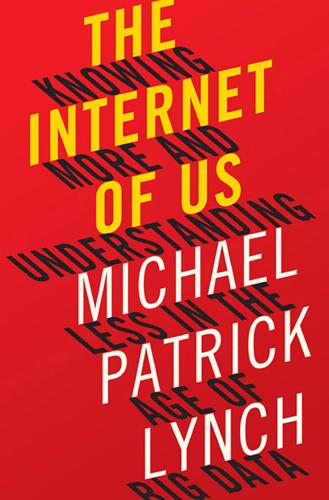
The Internet of Us: Knowing More and Understanding Less in the Age of Big Data
by
Michael P. Lynch
Published 21 Mar 2016
That works fine, as long as the street map is not too detailed itself, and as long as there aren’t too many underground tubes and tracks. If, for example, there is just one track, with two stops, then passengers only need to know where these stops are in order to orient themselves. But what if there are dozens of stops, and the lines crisscross and don’t follow the paths of the streets overhead? That was the problem that Harry Beck, an employee of the London Underground, aimed to solve in 1931 by developing a new Tube map—one which, with additions, is still familiar to riders today. What was different about Beck’s map is that he ignored the geography of the city and concentrated solely on showing, without reference to scale, the sequence of stations and the intersection of the Underground lines.

Britain's 100 Best Railway Stations
by
Simon Jenkins
Published 28 Jul 2017
Holden called his stations ‘brick boxes with concrete lids’, as demonstrated at Southgate and Arnos Grove. Six years later, he travelled to Moscow to study Stalin’s new Metro designs, but he had no truck with the dictator’s bravura revivalism. The new Underground would be revolutionary and sweeping. It even embraced Edward Johnston’s LT roundel and Harry Beck’s ‘electric circuit’ Tube map, still London’s most sacred design icons. The Second World War completed what the Great War had begun. The new conglomerates were brought under state control for the duration, and nationalised in 1948. Shareholders were content to be compensated for near-worthless stock.

Cogs and Monsters: What Economics Is, and What It Should Be
by
Diane Coyle
Published 11 Oct 2021
Economists put models at the heart of their methodology. A model is an attempt to make sense of the world by including only relevant detail. A good model is a powerful tool for analysis and prediction. As mentioned in Chapter One, one well-known example of a good model is the map of the London Underground originally developed by Harry Beck. It is a flawed guide, for example, taking tourists down two deep escalators, to wait on the platform and travel 260 meters on a train, and then up in a lift, if they want to travel from Leicester Square to Covent Garden. This is a three-minute walk above ground. Still, the map is an accurate enough representation of London’s geography for its purpose and an invaluable guide for passengers.
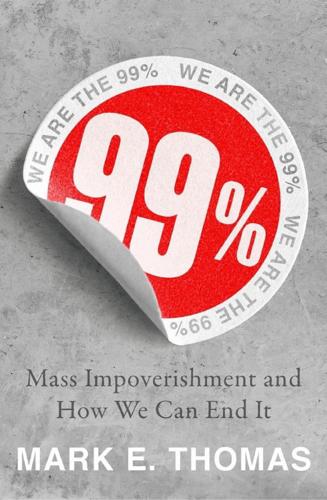
99%: Mass Impoverishment and How We Can End It
by
Mark Thomas
Published 7 Aug 2019
On the other hand, trying to plan an afternoon’s walk across the fields to a country pub using a motorway route-planning map would be impossible, as it contains none of the relevant details. One of the most useful maps in the world is not even to scale: the London Underground map. This topological map of the city’s underground network was first created by a technical draughtsman, Harry Beck, in 1931.2 Producing the map was Beck’s own idea and the first draft was produced in his spare time. London Underground was initially cautious about publishing it because it was so different from other maps that had been produced up to that time. But the map proved hugely popular with the public because it was highly functional, and was quickly widely adopted.

Maphead: Charting the Wide, Weird World of Geography Wonks
by
Ken Jennings
Published 19 Sep 2011
* The terrifying TV of my Reagan-era childhood was all related to nuclear war—The Day After, of course, but also this one episode of the sitcom Benson in which the cast prepares for Armageddon in a bunker under the governor’s mansion. I am the only person in the world who still has nightmares about Benson. * Well, I’m not the only one who feels a little bit of vertigo when maps change, as London transport officials learned in 2009. The “tube map” of the London Underground was created in 1931 by the engineer Harry Beck, who was inspired by diagrams of electric circuits to create a map that was schematically but not geographically accurate and was paid all of five pounds for his troubles. The map has become part of the fabric of London life, appearing on countless T-shirts, coffee mugs, umbrellas, and so on, and in 2006 was voted the second best design in British history (the Concorde came out on top).
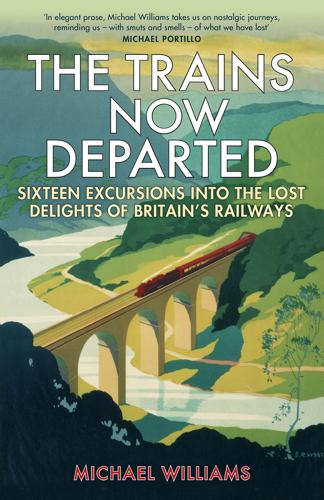
The Trains Now Departed: Sixteen Excursions Into the Lost Delights of Britain's Railways
by
Michael Williams
Published 6 May 2015
With the sylvan theme never far away, the Edwardian spin doctors up at HQ in Baker Street went on over the next decades to deploy every modern trick in creating one of the great advertising myths – even today the word Metro-land is shorthand for a social world that can be summoned up in an instant. A pity that its inventor, James Garland, the chief copywriter in the Met’s marketing department, has vanished into obscurity, unlike other heroes of the London Tube such as Frank Pick, who pioneered the house style, and Harry Beck, who designed the famous Tube map. Legend has it that Garland was ill in bed with flu when ‘Metro-land’ came to mind. Lazarus-like apparently, he leaped out of bed and rushed into the office to convey the good news. Garland’s mission statement was unashamedly elitist. Never mind the thousands of low-income clerks who might have benefited from the new trains and the housing estates that were springing up around the new stations as the railway pushed through Middlesex into Hertfordshire and Buckinghamshire; the Met’s eyes were turned firmly upmarket.
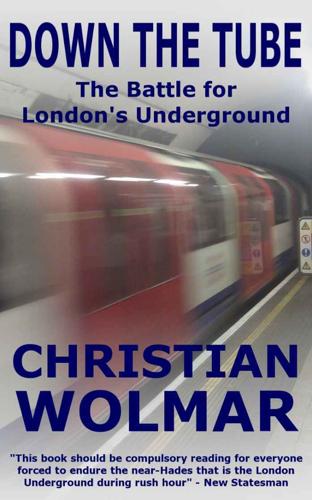
Down the Tube: The Battle for London's Underground
by
Christian Wolmar
Published 1 Jan 2002
This book, therefore, starts with a look at how the London Underground, once the best underground railway in the world, an example universally admired, got into its current dishevelled state. * * * CHAPTER TWO Privately built becomes publicly owned The haphazard geography of the Tube system is all too easily disguised by the wonderful simplicity and familiarity of the Harry Beck map that adorns every Underground station. That brilliant design turns an intricate web of lines strewn randomly across London into a coherent network depicted in those basic colours that resemble those on that equally comforting and familiar representation of the capital, the Monopoly board. In reality, though, the system is a messy jumble of lines with infuriating quirks that are barely fathomable by Londoners, let alone the millions of tourists and out-of-towners who use the Tube.

Mind in Motion: How Action Shapes Thought
by
Barbara Tversky
Published 20 May 2019
The spiritual for Europeans in the Middle Ages. What’s included is exactly the information that the users of the maps needed, uncluttered by information they didn’t need. With those features in mind, let’s skip a few millennia to a map used today by millions of people. The London Tube map. I can’t reprint it here, but Harry Beck’s map of the London Underground entered the world in 1931 and has since been imitated by transport systems all around the globe. In an odd way, it resembles the stick maps used by the Marshall Islanders only, instead of ocean currents and islands, we have underground lines and stops. It shows—but distorts—a simplified skeleton of the train lines, depicted as lines running vertically, horizontally, or diagonally, by no means an accurate reflection of their pathways.

The City on the Thames
by
Simon Jenkins
Published 31 Aug 2020
It became the largest public transport undertaking in the world. Its manager, Frank Pick, and designer, Charles Holden, set new standards in comfortable and stylish urban transit. Holden’s Tube stations, much influenced by Sweden, were among the most exciting creations of interwar architecture, as in the field of design was Harry Beck’s Tube map, based on an electrical circuit diagram. It is essentially the same map today. The LPTB was probably the nearest London had to a planning authority in the first half of the twentieth century. The historian Lionel Esher called it ‘the prime agent of London regional development’, purely by virtue of where it decided to extend its railways.
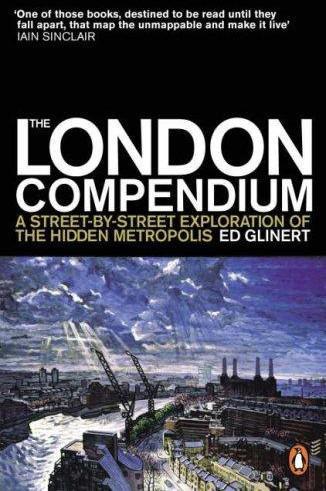
The London Compendium
by
Ed Glinert
Published 30 Jun 2004
Barry and built in 1859 by the owners of the Covent Garden Opera House, made use of the possibilities afforded by cast iron and glass that had inspired Joseph Paxton’s Crystal Palace, but was not a success and a rival flower market opened in Bedford Street soon after. It was converted to a fruit market in 1887 and just 100 years later, in 1980, the western section became the home of the Transport Museum, based around a collection of vehicles first assembled in Chiswick in the 1920s by the London General Omnibus Company. The museum features the work of Harry Beck, designer of the first structured underground map in 1931, while the shop, one of the best of the many London museum shops, contains a large collection of E. McKnight Kauffer’s art deco Underground posters. south side The south side of the piazza was occupied by the wall of the Bedford House mansion until the latter was demolished in 1706 and is now home to the 1985 Jubilee Market, during the construction of which archaeologists uncovered evidence of the Saxon settlement of Lundenwic, including traces of timber buildings and burial sites.
…
Mill Hill East Although the station, which opened in 1941 to serve a nearby barracks, was meant to be the first stop on a branch line to Edgware, work was abandoned because of the war, leaving Mill Hill East on a conspicuous stump jutting out from the main High Barnet branch. Finchley Central The southbound platform has a reproduction of Harry Beck’s original 1930s Underground map, as it was his local station. East Finchley Located at the northern end of what until the end of the twentieth century was the world’s longest tunnel, the southern section emerging at Morden. Highgate Open-air platforms of the abandoned Highgate–Finsbury Park railway are visible from the Shepherd’s Hill exit.
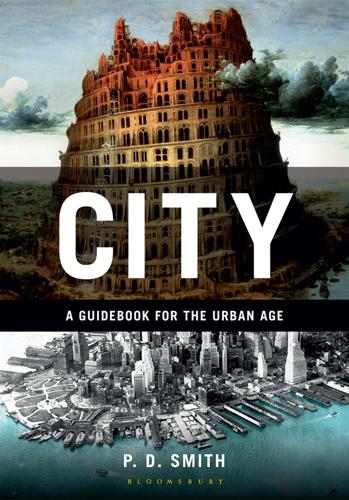
City: A Guidebook for the Urban Age
by
P. D. Smith
Published 19 Jun 2012
In the 1930s, London Transport commissioned leading artists such as Paul Nash and László Moholy-Nagy to design a series of posters for the Underground which became works of art in their own right. The colour-coded map of the Underground is itself now a design classic. Based on an electrical circuit diagram, the genius of Harry Beck’s 1932 map is that it did not try to represent the real distances between stations. Instead this ‘geoschematic’ map offers a simplified plan of the network that has since been copied by subway systems around the world, from Sydney to St Petersburg. Walter Sickert, Queen’s Road (Bayswater)Station.
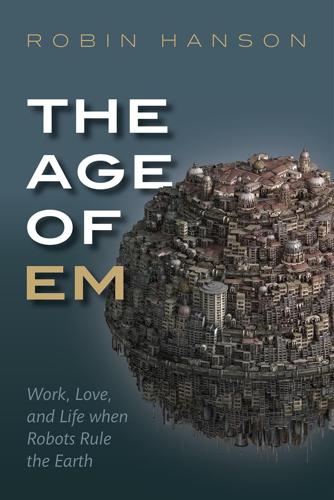
The Age of Em: Work, Love and Life When Robots Rule the Earth
by
Robin Hanson
Published 31 Mar 2016
Acknowledgments For their comments, I thank Paul Christiano, Peter Twieg, Katja Grace, Carl Shulman, Tyler Cowen, Fabio Rojas, Bonnie Hanson, Luke Muehlhauser, Nikola Danaylov, Bryan Caplan, Michael Abramowicz, Gaverick Matheny, Paul Crowley, Peter McCluskey, Sam Wilson, Chris Hibbert, Thomas Hanson, Daniel Houser, Kaj Sotala, Rong Rong, David Friedman, Michael LaTorra, Ben Goertzel, Steve Omohundro, David Levy, Jim Miller, Mike Halsall, Peggy Jackson, Jan-Erik Strasser, Robert Lecnik, Andrew Hanson, Shannon Friedman, Karl Mattingly, Ken Kittlitz, Teresa Hartnett, Giulio Prisco, David Pearce, Stephen Van Sickle, David Brin, Chris Yung, Adam Gurri, Matthew Graves, Dave Lindbergh, Scott Aaronson, Gary Drescher, Robert Koslover, Don Hanson, Michael Raimondi, William MacAskill, Eli Dourado, David McFadzean, Bruce Brewington, Marc Ringuette, Daniel Miessler, Keith Henson, Garett Jones, Alex Tabarrok, Lee Corbin, Norman Hardy, Charles Zheng, Stuart Armstrong, Vernor Vinge, Ted Goertzel, Mark Lillibridge, Michael Chwe, Olle Häggström, Jaan Tallinn, Joshua Fox, Chris Hallquist, Joshua Fox, Kevin Simler, Eric Falkenstein, Lotta Moberg, Ute Shaw, Matt Franklin, Nick Beckstead, Robyn Weaving, François Rideau, Eloise Rosen, Peter Voss, Scott Sumner, Phil Goetz, Robert Rush, Donald Prell, Olivia Gonzalez, Bradley Andrews, Keith Adams, Agustin Lebron, Karl Wiberg, Thomas Malone, Will Gordon, Philip Maymin, Henrik Jonsson, Mark Bahner, Adam Lapidus, Tom McKendree, Evelyn Mitchell, Jacek Stopa, Scott Leibrand, Paul Ralley, Anders Sandberg, Eli Lehrer, Michael Klein, Lumifer, Joy Buchanan, Miles Brundage, Harry Beck, Michael Price, Tim Freeman, Vladimir M., David Wolf, Randall Pickett, Zack Davis, Tom Bell, Harry Hawk, Adam Kolber, Dean Menk, Randall Mayes, Karen Maloney, Brian Tomasik, Ramez Naam, John Clark, Robert de Neufville, Richard Bruns, Keith Mansfield, Gordon Worley, Giedrius, Peter Garretson, Christopher Burger, Nithya Sambasivam, Zachary Weinersmith, Luke Somers, Barbara Belle, Jake Selinger, Geoffrey Miller, Arthur Breitman, Martin Wooster, Daniel Boese, Oge Nnadi, Joseph Mela, Diego Caleiro, Daniel Lemire, Emily Perry, Jess Riedel, Jon Perry, Eli Tyre, Daniel Erasmus, Emmanuel Saadia, Erik Brynjolfsson, Anamaria Berea, Niko Zinovii, Matthew Farrell, Diana Fleischman, and Douglas Barrett.

The Making of Modern Britain
by
Andrew Marr
Published 16 May 2007
One of the other great buildings of the thirties is the De La Warr Seaside Pavilion at Bexhill in Sussex, a bright white and glass combination of theatre, bars, restaurant, café, sun terraces and bandstand that breathes optimism and ozone: it was designed by Erich Mendelsohn, who had fled from the Nazis, and by Serge Chermayeff. Other modernists were home-grown, such as Harry Beck, a young draughtsman working for the signalling department of London Transport, who in 1931 came up with the idea for the Underground map – a simple breakthrough which has been copied around the world and was voted Britain’s second-favourite design of the twentieth century (after Concorde). Indeed, London Transport, under the leadership of Frank Pick, a nonconformist and teetotal idealist, became the flag-bearer for modernism in Britain.
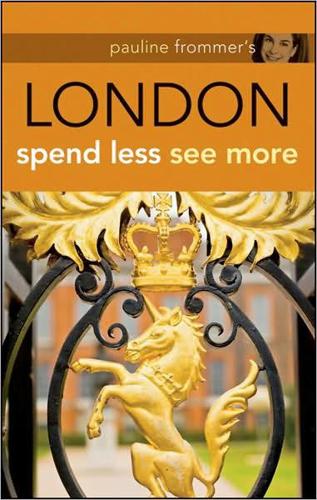
Pauline Frommer's London: Spend Less, See More
by
Jason Cochran
Published 5 Feb 2007
Cash and credit cards both work. One-way tickets are called “singles” and round-trips are “return.” 06_308691-ch02.qxp 12 12/23/08 Chapter 2 9:53 PM Page 12 The Lay of the Land The Tube Map Lies! Although the Tube’s handsome map, first seen in 1931, is a marvel of elegance (its draughtsman, Harry Beck, is a demigod among graphic designers for his restrictive use of angles and color), it tells filthy lies. Tourists who take it at face value will, to their pocketbooks’ peril, believe that some stations are miles apart and only accessible via circuitous journeys. In truth, many are extremely close.
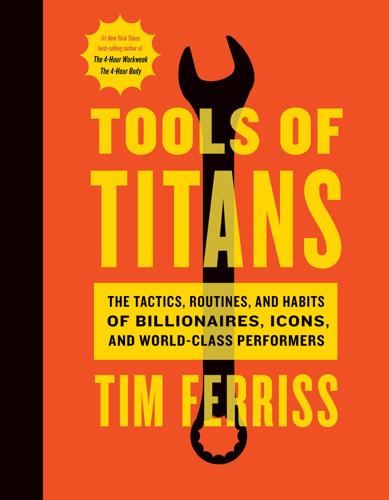
Tools of Titans: The Tactics, Routines, and Habits of Billionaires, Icons, and World-Class Performers
by
Timothy Ferriss
Published 6 Dec 2016
Stross), Born Standing Up: A Comic’s Life (Steve Martin), The Hard Thing About Hard Things (Ben Horowitz) Arnold, Patrick: Jack Kennedy: Elusive Hero (Chris Matthews), From Chocolate to Morphine: Everything You Need to Know About Mind-Altering Drugs (Andrew Weil), Guns, Germs, and Steel (Jared Diamond) Attia, Peter: Mistakes Were Made (but Not by Me): Why We Justify Foolish Beliefs, Bad Decisions, and Hurtful Acts (Carol Tavris and Elliot Aronson), Surely You’re Joking, Mr. Feynman! (Richard P. Feynman), 10% Happier: How I Tamed the Voice in My Head, Reduced Stress Without Losing My Edge, and Found Self-Help That Actually Works—A True Story (Dan Harris) Beck, Glenn: The Book of Virtues (William J. Bennett), Winners Never Cheat (Jon Huntsman) Bell, Mark: COAN: The Man, The Myth, The Method: The Life, Times & Training of the Greatest Powerlifter of All-Time (Marty Gallagher) Belsky, Scott: Life’s Little Instruction Book (H. Jackson Brown, Jr.)
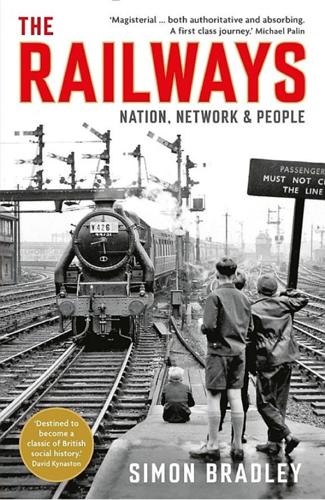
The Railways: Nation, Network and People
by
Simon Bradley
Published 23 Sep 2015
That meant the gradual acceptance of the railway compartment as a social space common to anyone who could afford to pay, with all the challenges and compromises that came of close confinement with strangers. Footnotes * A convention taken to its logical end by the individual line-plans between window and roof in the trains of the London Underground, strings pulled from the diagrammatic tangle of the famous map first codified by Harry Beck in 1931. ** In 1906 the Great Northern Railway built a saloon with a full-sized bath, but the idea failed to catch on. *** The idea perhaps seems slightly less strange to British travellers now that the Eurotunnel shuttle trains have adopted the concept for road vehicles, although their occupants line up within double-deck carriage trucks of the covered kind, with the option of getting out en route
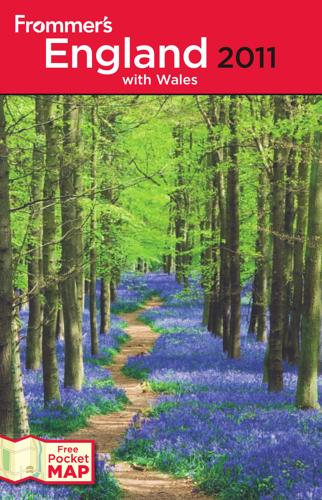
Frommer's England 2011: With Wales
by
Darwin Porter
and
Danforth Prince
Published 2 Jan 2010
The museum shows how London’s transport system evolved, and a representative collection of road vehicles includes a reconstruction of George Shillibeer’s Omnibus of 1829. Also of interest are a steam locomotive that ran the world’s first underground railway, a knifeboard bus, London’s first trolleybus, and a Feltham tram. The museum’s galleries also consider the future of London’s transport as well as the past. For the first time, Harry Beck’s original 1930s artwork for the world-famous Underground map is now on public display, along with gems from the museum’s valuable poster collections, including some by such famous artists as Man Ray. Covent Garden Piazza, WC2. & 020/7379-6344. www.ltmuseum.co.uk. Admission £10 adults, £8 seniors, £6 students, free for children 15 and younger.